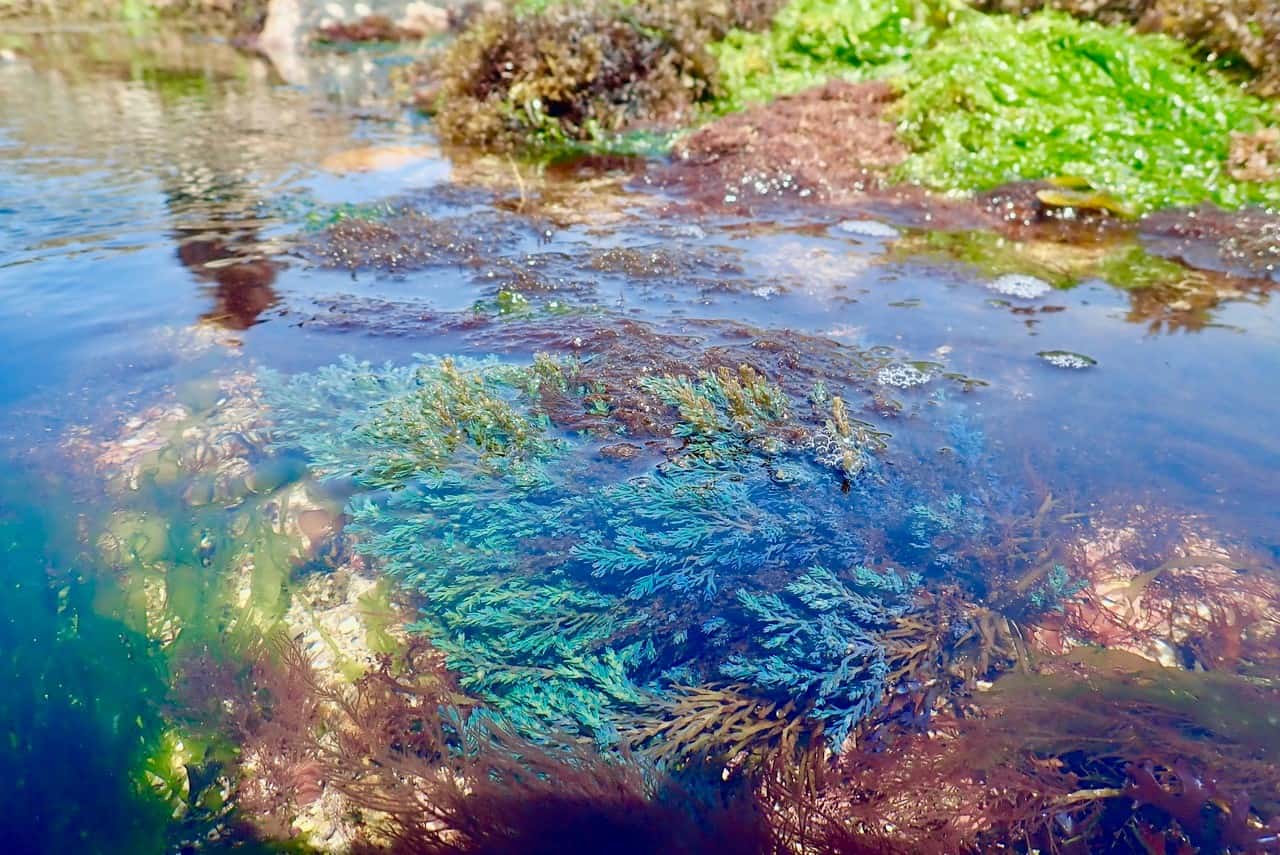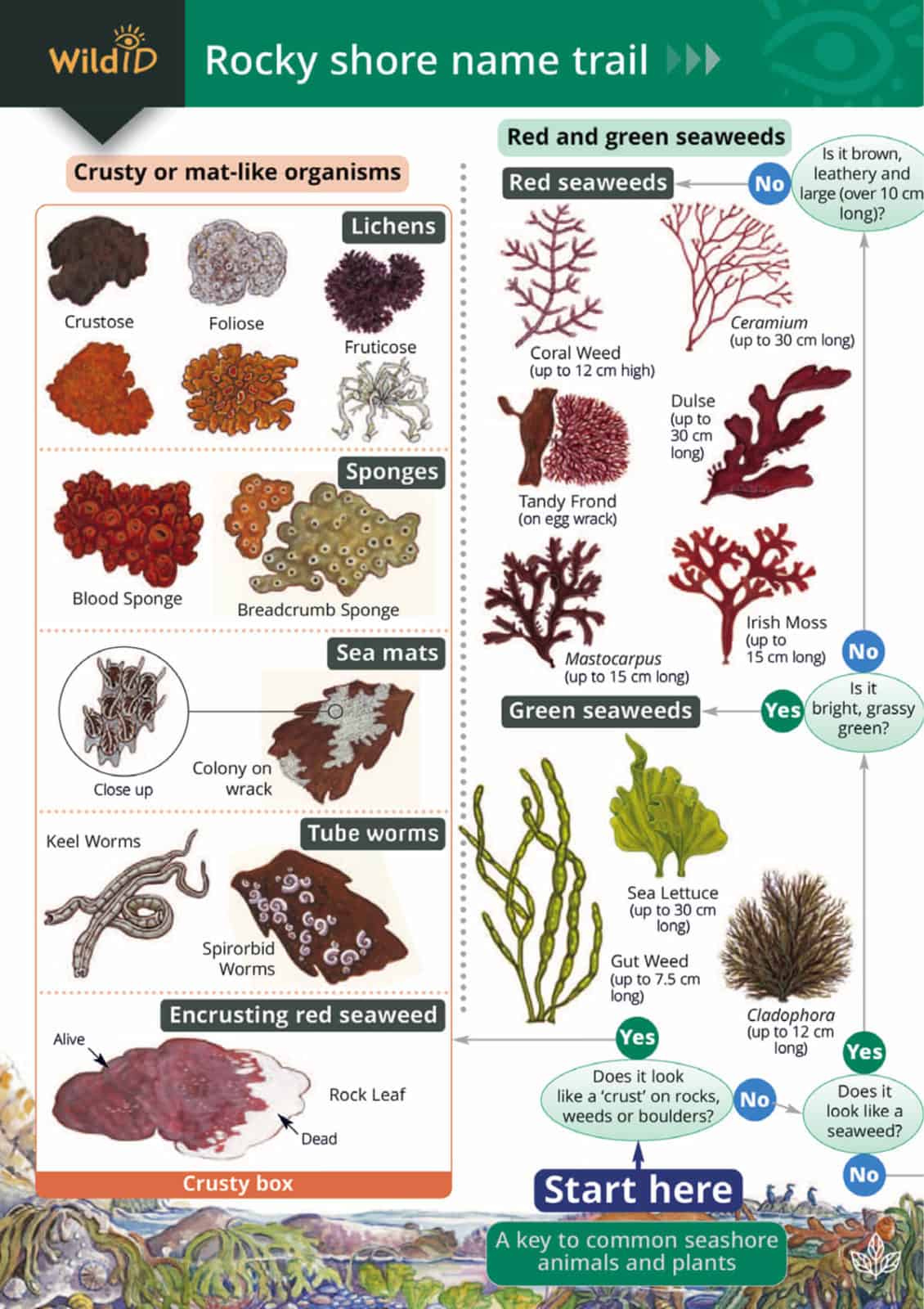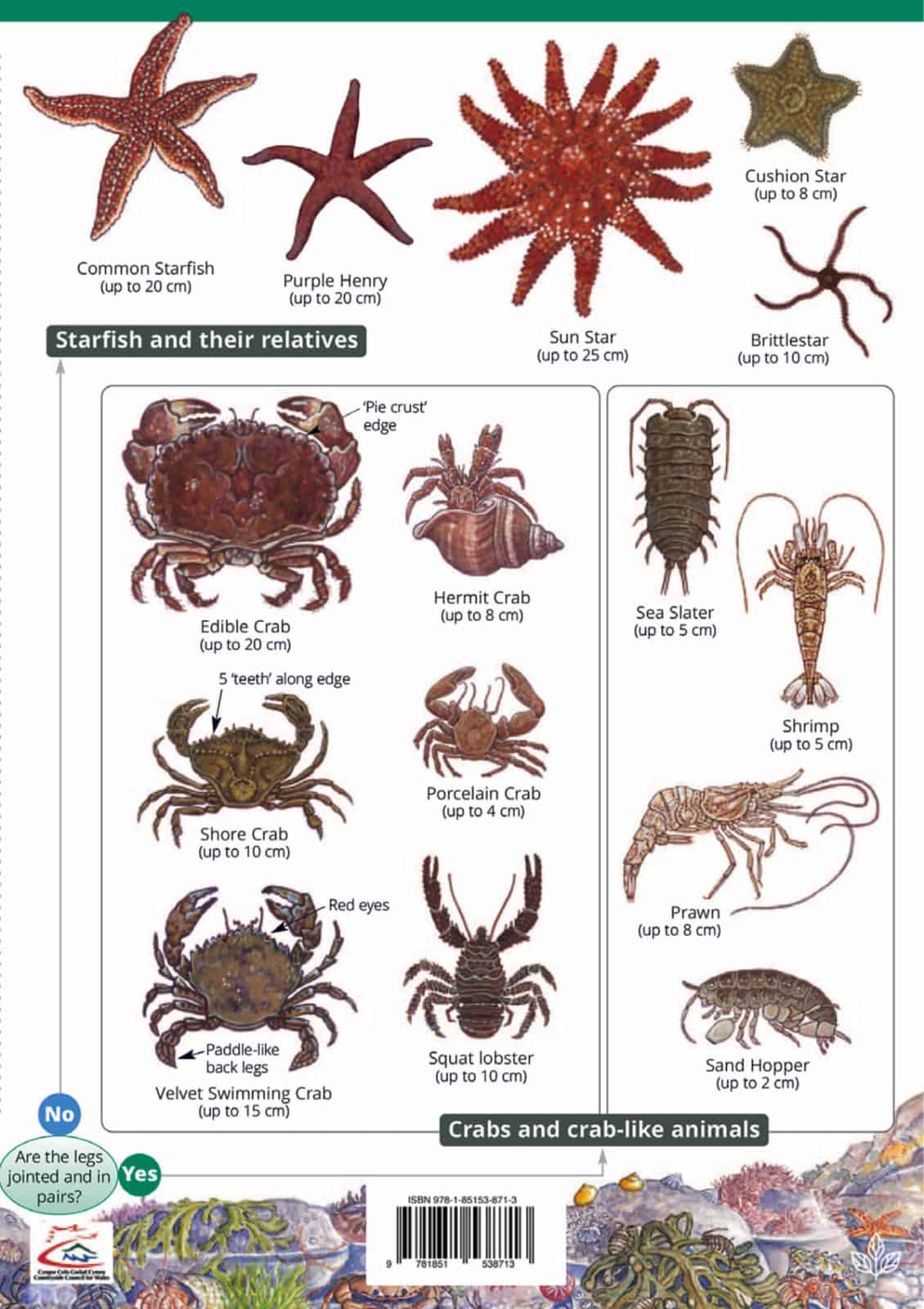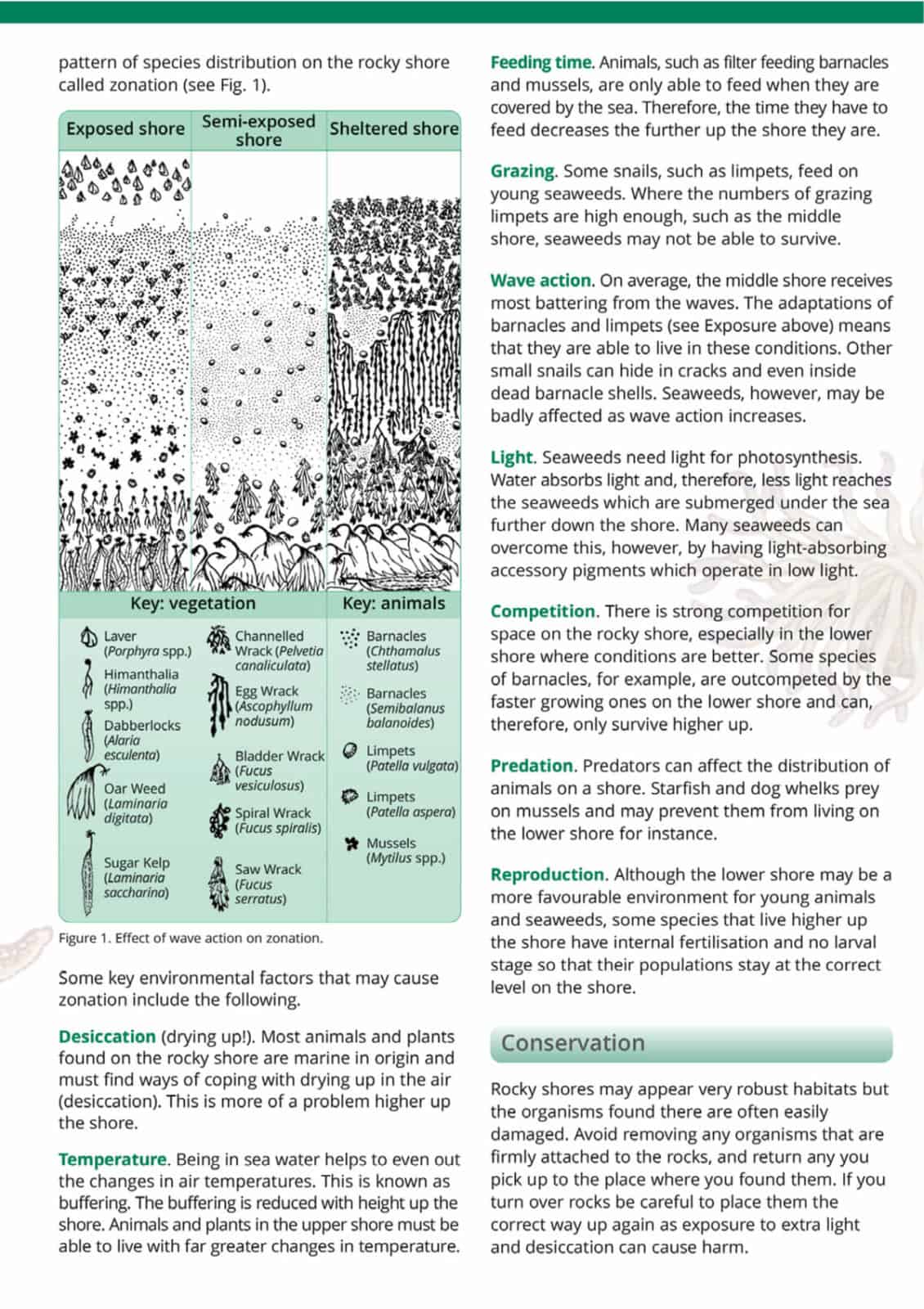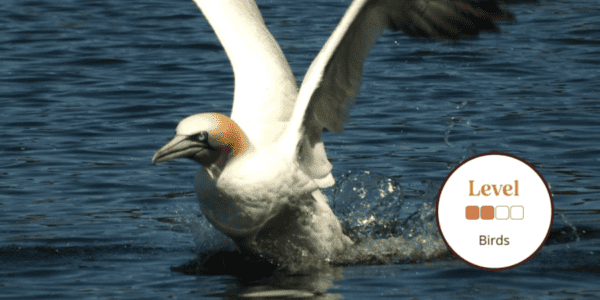Rocky shore name trail (encapsulated)
Going rockpooling? Our Rocky shore name trail is a favourite of generations of visitors to FSC field centres.
It features colour paintings of the most common limpets, mussels, periwinkles, topshells, starfish, crabs and fishes you might see, plus seaweeds, lichens and sponges. Use the trail’s straightfoward yes/no questions to find out the names. Then text on the reverse side describes what to look for in each group.
Most people (even cool ones) will admit to enjoying being on seashores, wrestling with crabs and identifying the seaweeds. Indeed rockpools and rocky shores are arguably Britain’s wildest habitats. There’s a huge number of living things squeezing into the narrow space between the tides. But at low tide the animals that live on the seashore tend to sit there quietly, almost begging you to discover and count them. Plus many of them are just the right size.
Almost every major group of animals has a representative on the rocky shore. Sponges are simple animals that filter food particles from seawater. Sea anemones have a soft body and stinging tentacles. Molluscs are soft-bodied animals, but many have shells. They include bivalves-like mussels, and rocky shore snails like limpets and topshells. Crustaceans are very common, and include lobsters, crabs and barnacles. Other exciting finds in rockpools include starfish, sea urchins, brittlestars and sea squirts.
The dominant plant-like organisms of rocky shores, the seaweeds, are all algae. Unlike plants, seaweeds do not have true roots, stems or leaves. Instead the holdfast, stipe and frond perform the function of these tissues. Like most plants, seaweeds use the sun’s energy to make sugars through photosynthesis. Seaweeds are divided into three groups: brown, red and green.
The Rocky shore name trail is also available as a standard chart.

